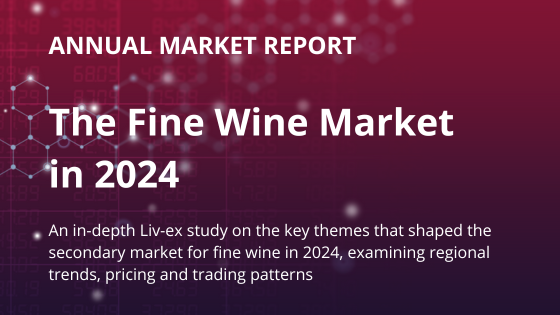Historically, Germany has been a small player on the secondary market for fine wine. Although Liv-ex has seen trade of German Riesling since 2003, the country’s share by volume and value as percentage of the overall trade has remained insignificant – at about 0.1%. That is, until recently.
So far in 2020, trade volumes are double that of 2019. Trade value is up 400% on last year. 22% of the Rest of the World trade is from Germany, up from its three-year average of 3%. The number of distinct wines traded (LWIN11) – nearly five months into 2020 – is double that in 2019. Meanwhile, Keller made it into the 2nd tier of the Liv-ex Classification 2019 and met the Power 100 criteria for the first time last year.
These stats look even more impressive when a longer view is taken, as in the chart below.
Germany: trade share and volume since 2015
In February, we spoke with the VDP about the changing position of German wine, an interview in which they told us that “fine German Riesling and Pinot Noir wines are among the most underpriced wines in the world” and that they expect German Pinot produced in small quantities to be “much more valued in the future while still retaining a good price compared to their Burgundian ‘siblings’”. With prices for Burgundy stagnating, might Germany benefit from Pinot lovers’ attention?
As far as colour trends are concerned, over 99% of German wine traded on Liv-ex is white, with very few Pinot Noirs enjoying the burst of activity yet.
The bulk of the buying has come from the US, UK and Asia. And a lot of it has been initiated by private clients. As our research showed, over 45% of trades for German wines have involved automation of sorts.
Germany has also benefited from increased critical attention. James Suckling awarded eight wines the perfect 100 points and further fourteen 99 points in his report ‘Top 100 wines of Germany 2019’. Jancis Robinson wrote ‘Now is the time to buy German’, and suggested that “German wines have never been better-made, nor better value relative to most other wines”. The Wine Advocate published ‘Germany: All Along the Rhine, Main and Neckar Rivers – The 2017s and 2018s’ in early May, in which Stephan Reinhardt says that “Germany can be proud of a series of excellent vintages starting with 2015”.
As buyers spread their interests, Germany might not be a trade secret for much longer.





